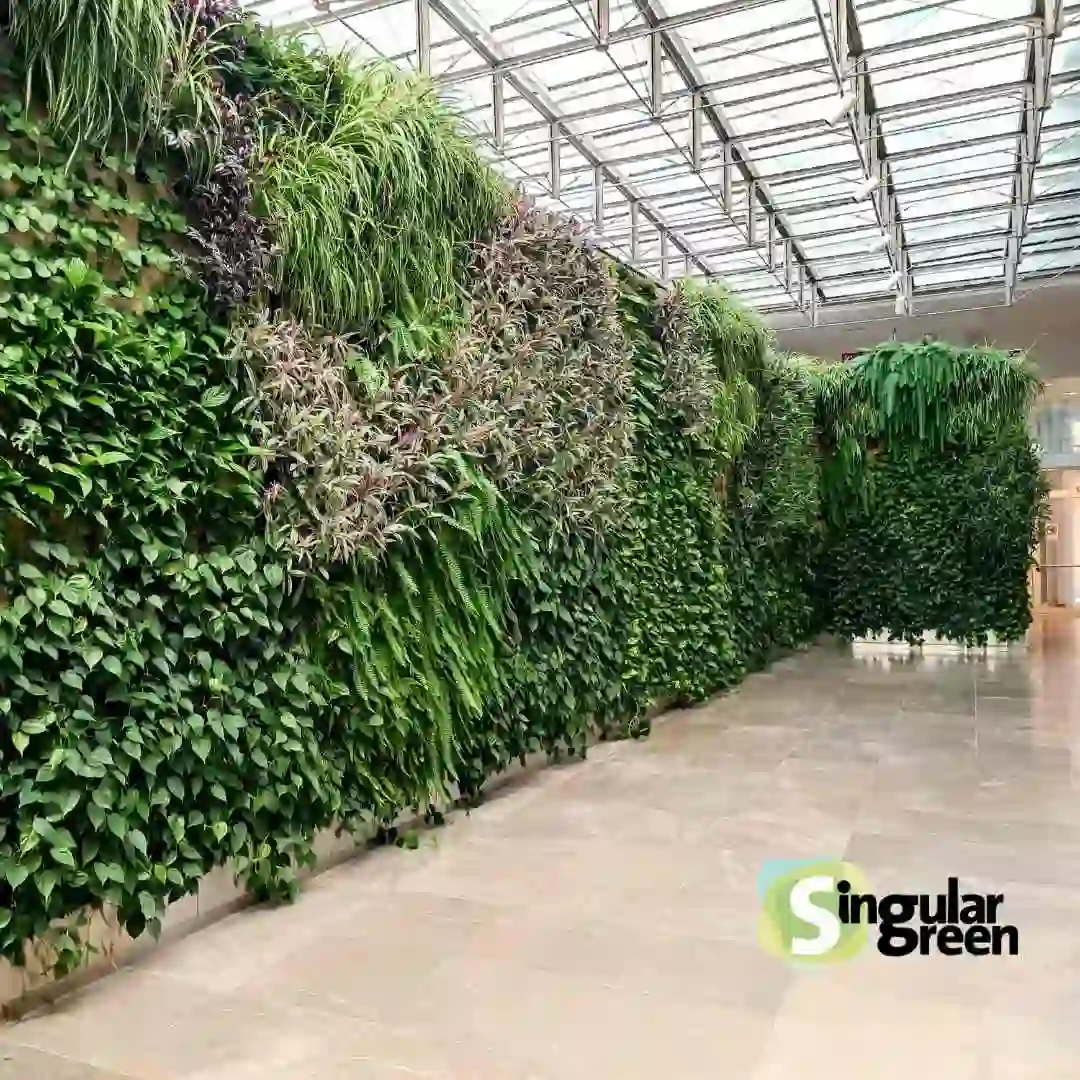Green roofs have become a popular solution to improve the sustainability of buildings and contribute to urban wellbeing.
These systems not only provide aesthetic benefits, but also offer significant functional advantages such as thermal and acoustic insulation, water retention and improved air quality.
However, for a green roof project to be successful, it is essential to consider a number of technical and design parameters.
The following are the six key points that every designer needs to consider.
All designers must be aware of the constraints they face in each project in order to be able to choose the most suitable construction solution in each case and act accordingly.
The following points are those that we should never lose sight of when planning our green roofs.
Parameters of a green roof
1. Main function of the green roof
One of the first questions to ask is whether we are looking for a green roof that satisfies the aesthetic or functional quality.
If we choose to give greater importance to image, we should choose species that respond to the aesthetic idea of the project.
However, if we are looking for functional benefits, we must take into account the concept of leaf surface, as the higher the leaf surface, the greater the benefits in terms of air cleaning and thermal insulation.
The leaf area is, as the name suggests, the number ofm2 of leaves in am2 of roof area. In a lawn finish with a height of 3-5 cm, the leaf surface is 6-9 m2/m2 of ground surface.
If this vegetation reaches a height of 60 cm, the leaf surface can reach 225 m2/m2, but sedum has a value of 1-5 m2/m2. (Values taken from the book Green roofs, Planning, execution, practical advice, Gernot Minke).
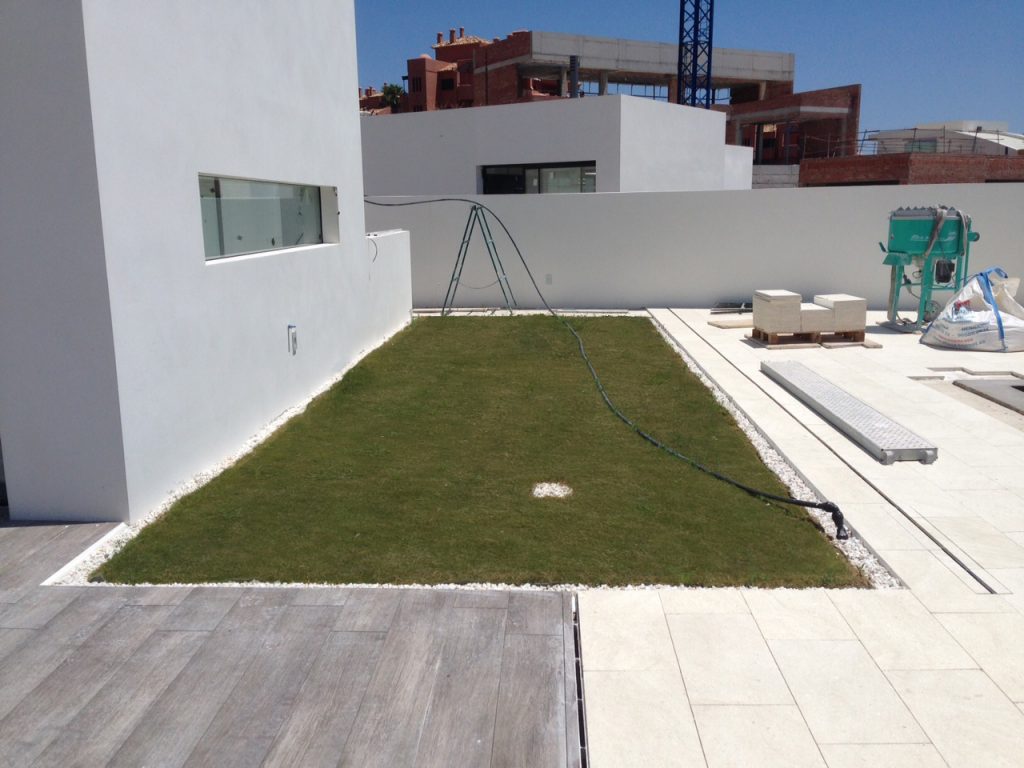
Therefore, if additional insulation is sought, vegetation with a high leaf area value, such as grass, should be chosen, whereas sedum has more of an aesthetic function, as it is very colourful in the flowering season.
2. Load bearing and weight of the vegetation cover
When we are talking about new construction, weight is not usually a determining factor (as long as there are no economic restrictions), as by including in the calculations the weights of all the elements that we want to incorporate, we will obtain the dimensioning of the necessary support.
When calculating the load to be borne by the slab where the roof will be located, the weight of all the layers that make up the roof, including the vegetation, must be taken into account as its own weight. In the case of the substrate, we must also use the weight of the substrate when it is saturated with water.
As far as overloads are concerned, they will be those specific to the use that the roof will have, taking into account whether it will be walkable or not.
However, if we are going to work on an existing slab, we must know the load that it is capable of supporting and, depending on this value, choose our type of roof, always on the side of safety.
An ideal solution for slabs with a low load-bearing capacity, i.e. that support little weight, is a green roof of the Rhizome type.
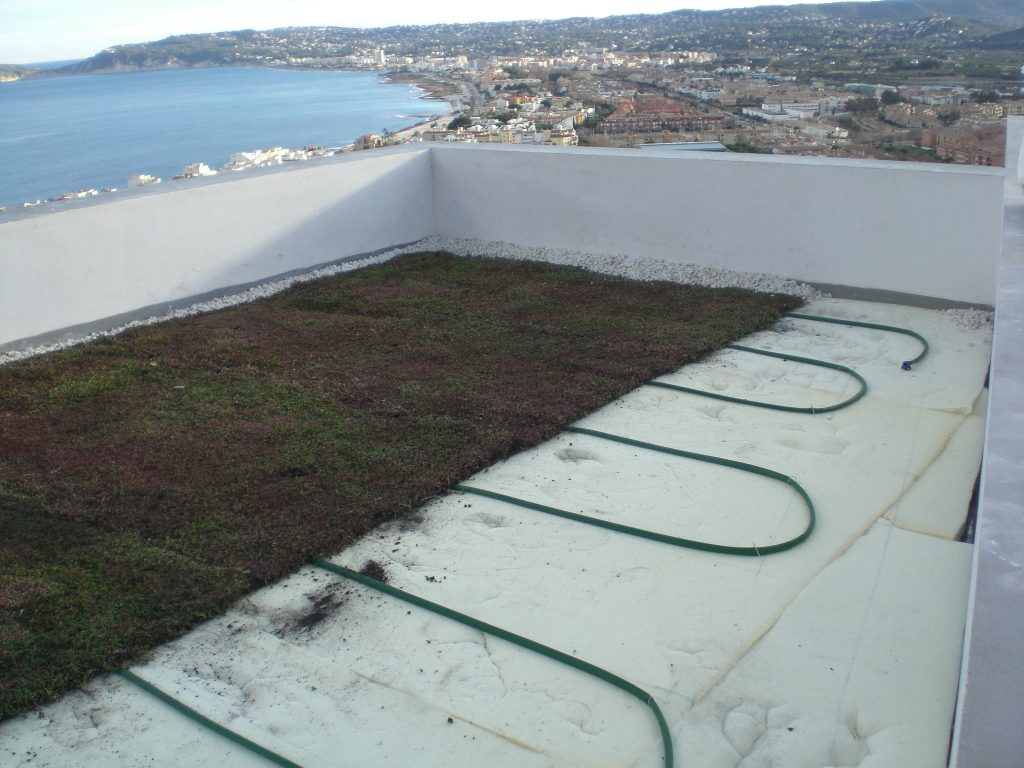
3. Roof orientation and shading
North and south orientation on a roof means different light and temperature conditions. Therefore, when choosing species, we must take into account the orientation of our working plane.
If we are facing south (in the northern hemisphere or north in the southern hemisphere) we will look for plants that can withstand the high incidence of solar radiation, such as:
- Festuca ovina ‘Glauca’ (Blue fescue),
- Portulaca grandiflora (Portulaca, Purslane),
- Armeria maritima (Armeria, Sea carnation), or
- Miscanthus sinensis (Miscanthussinensis, silver grass),
If we are in the north (in the northern hemisphere or in the south in the southern hemisphere) or in shady areas due to any other aspect of the building, we should look for species that are not affected by the lack of direct light, such as Dichondra repens (Dichondra repens), Dichondra repens (Dichondra repens) or Dichondra repens (Dichondra repens):
- Dichondra repens (Dichondra, Mouse-ear),
- Vinca minor (Vinca, periwinkle, periwinkle) or
- Ajuga reptans (Comfrey medium, Arugula, Ajuga, Lechuguilla).
4. Slope of the canopy
The slope of the roof should be taken into account mainly for two reasons, the first being the water drainage system and the second the need for substrate support systems.
A 0% slope, in the event of heavy rainfall, can lead to water stagnation, which is detrimental to many species, causing them to rot.
In these cases, an effective drainage system should be considered.
On the other hand, an excessive slope can cause the rapid evacuation of water, giving rise to a dry substrate.
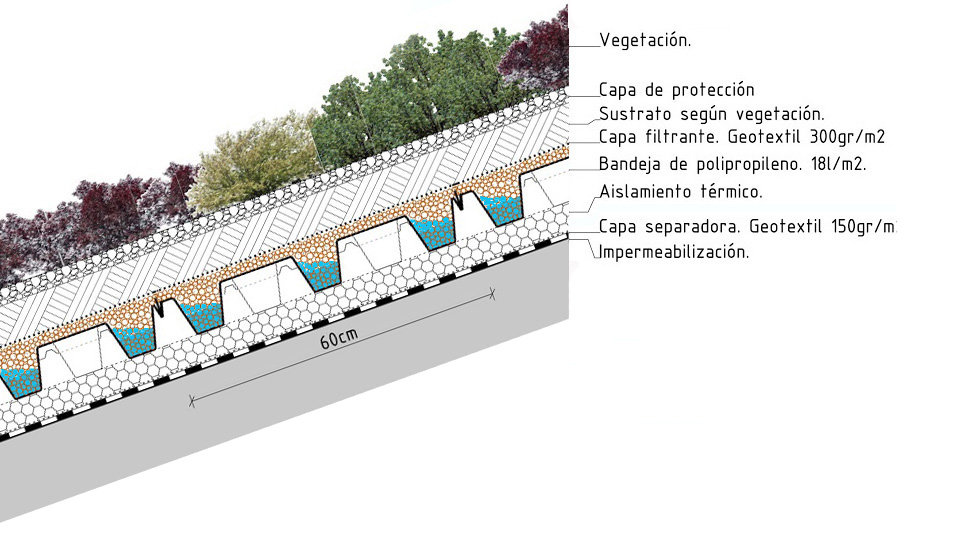
Another disadvantage of a high slope is the shifting of the substrate layer, which should be stabilised by some system.
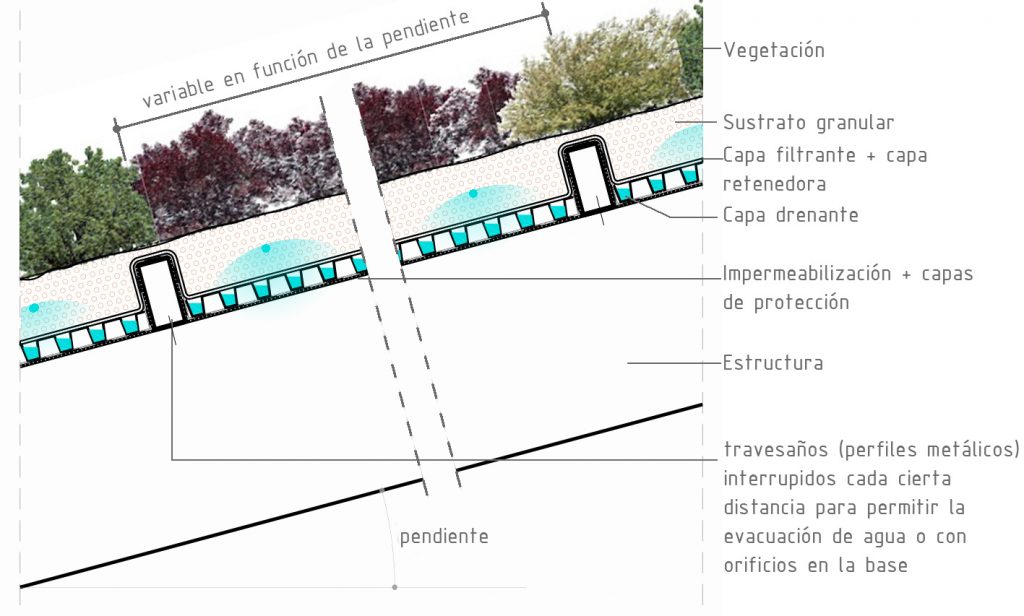
5. Transport of materials and access to the roof
We must bear in mind that in the case of roofs, the materials must be lifted up to the level of the slab, where they will be installed.
It is possible that in a new construction project we may have a boom that can take the materials to the last slab without any problem, but in an existing building it may be complicated to move the materials to the working plane.
If we choose a conventional substrate, this is usually transported in big-bags with a capacity of 1 or 2 m3, with the weight that this entails.
With regard to the vegetable finish, if we opt for blankets that have already been cultivated, we will also find ourselves with heavy loads to transport.
All these aspects must be taken into account, as we cannot consider a roofing solution without knowing how to implement it.
For a roof that is difficult to access, we can opt for a system of small trays of already planted vegetation, such as our Epifita system.

6. Implementation budget
The budget is usually one of the main limiting factors when deciding on the type of roof to be installed.
Extensive roofs have, compared to intensive roofs, a lower material execution cost and minimum maintenance.
Within the extensive ones, if we choose a vegetal substrate instead of inorganic substrates such as rock wool or polyurethane foam, we will also have a lower cost.
With regard to the vegetation finish, we can opt for a seedbed instead of already planted vegetation in order to reduce costs.
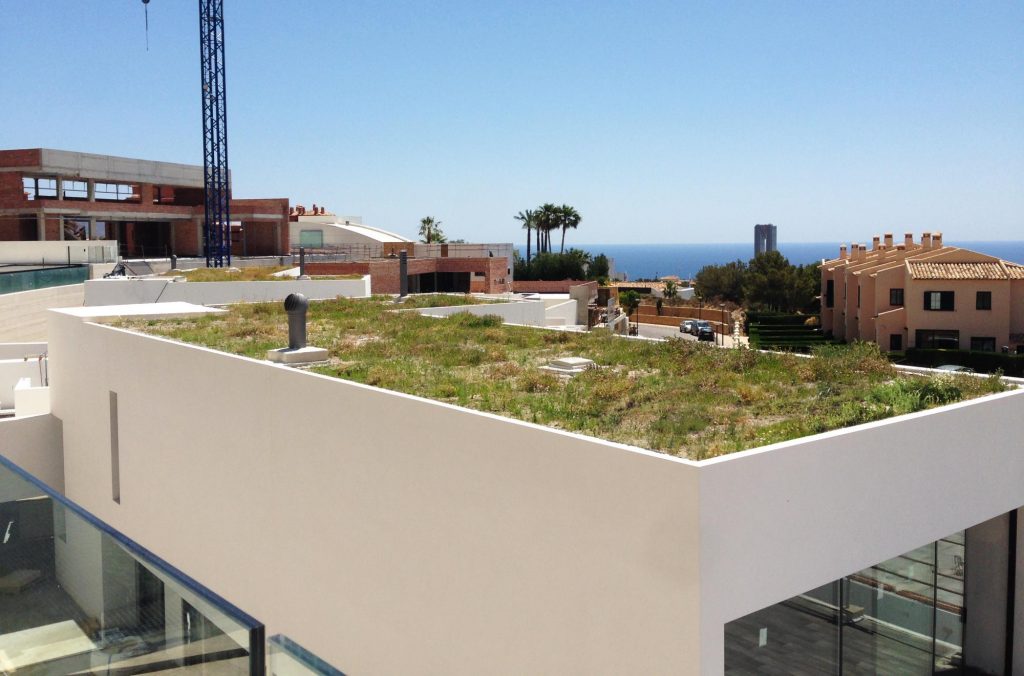
By taking these 6 aspects into account from the beginning of the project, we will ensure a great deal of success at the end of our work.
Conclusion
Considering these six aspects from the start of the project ensures that the green roof not only meets the aesthetic and functional objectives, but is also technically and economically feasible. With proper planning and the right choice of species and materials, green roofs can transform urban spaces, bringing environmental benefits and improving the quality of life of their inhabitants.







